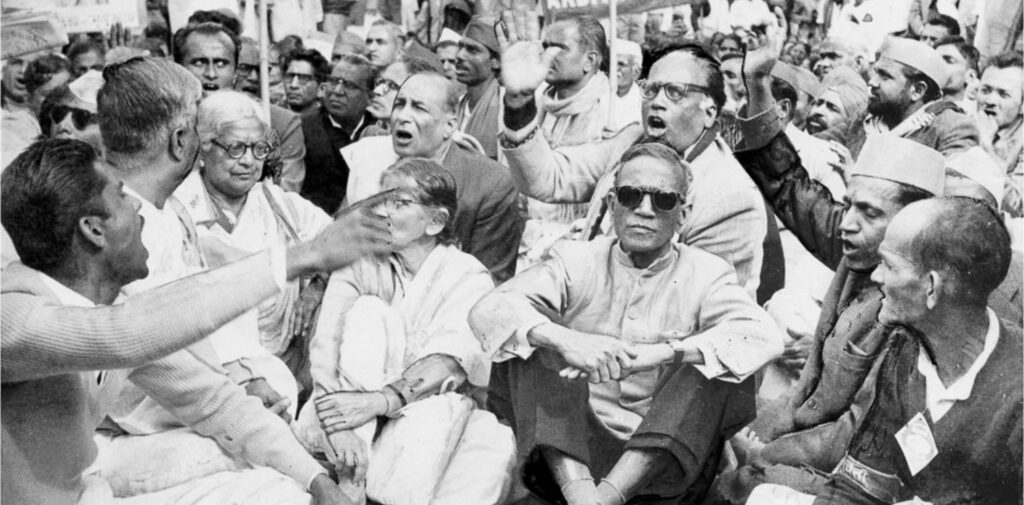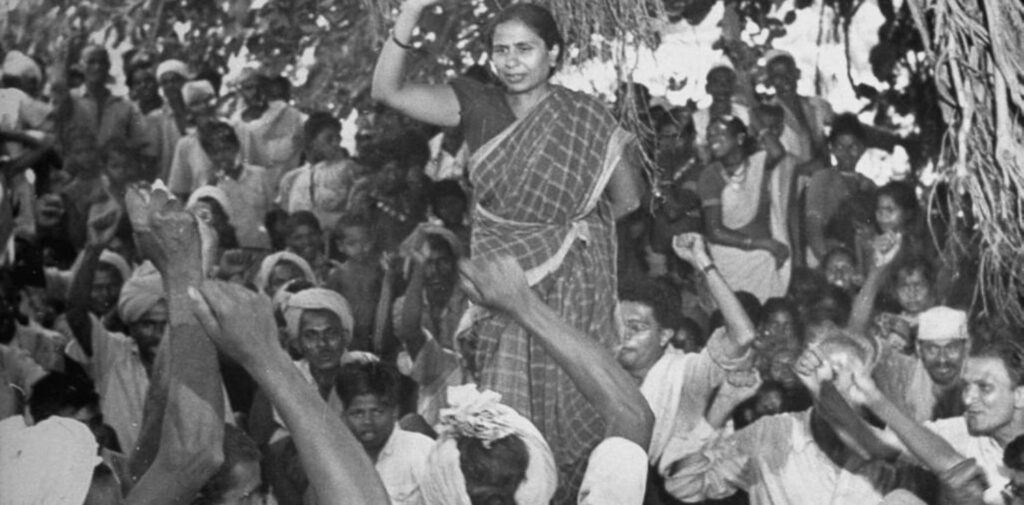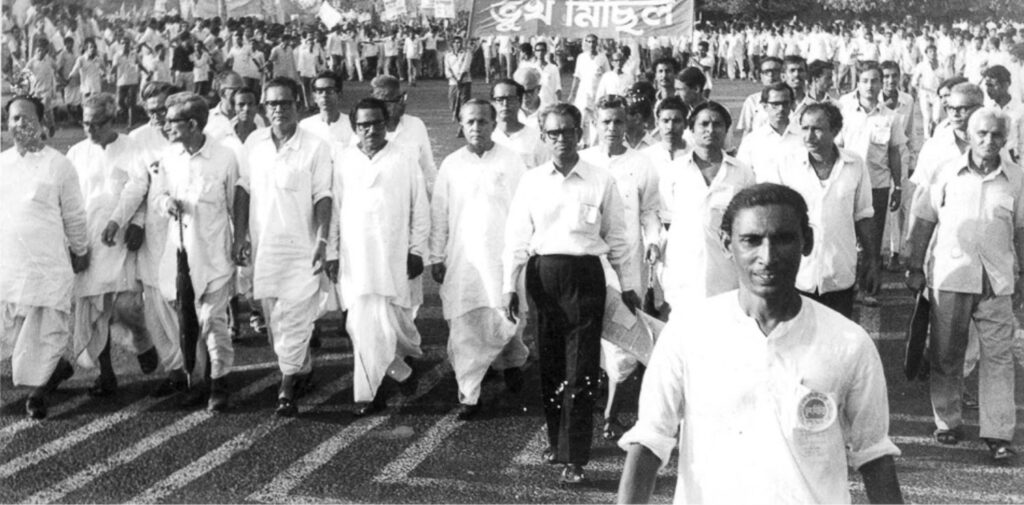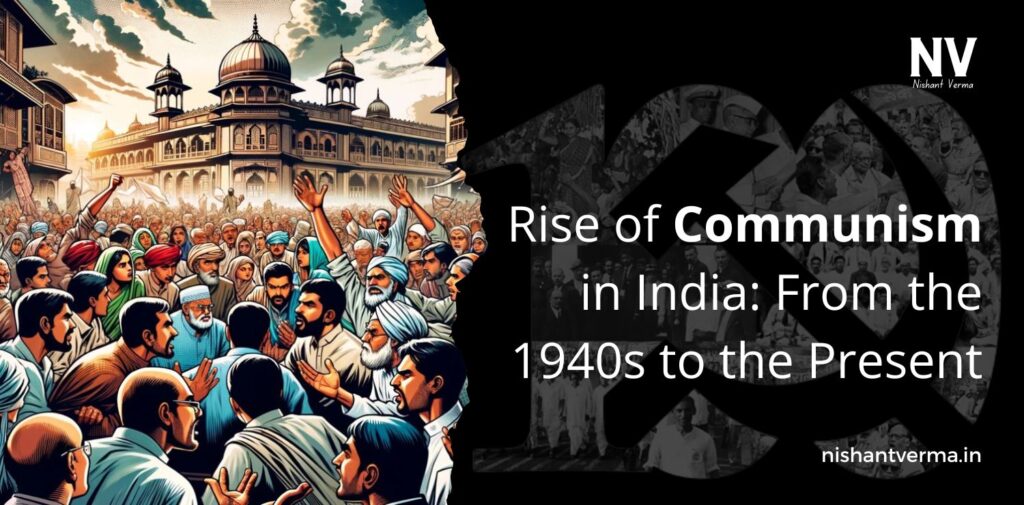Communism, as an ideology and political movement, made significant inroads in India during the 20th century. Although communism was born in Europe, it found a unique and influential place in India’s political landscape, especially from the 1940s onward. The rise of communism in India was shaped by various factors including the struggle for independence, the socio-economic conditions of the masses, and the global spread of socialist ideas. This article will explore the rise of communism in India from the 1940s to the present day, focusing on its origins, growth, challenges, and its role in contemporary Indian politics.
Origins of Communism in India
Communism arrived in India in the early 20th century, inspired by the Russian Revolution of 1917 and the rise of Marxist thought. Indian intellectuals, workers, and students were influenced by the success of the Bolsheviks in Russia, who overthrew the monarchy and established a socialist state. The Communist Party of India (CPI) was founded in 1925 in Kanpur, with the goal of promoting Marxist ideology and the idea of a workers’ revolution in India.
While communism was initially limited to a small intellectual circle and urban centers, it gained more relevance during the Indian independence struggle. The CPI initially aligned with the Indian National Congress (INC), supporting the independence movement and its leadership. However, as the years went by, a growing difference emerged between the Congress’s moderate approach and the more radical ideas of the communists. The CPI’s influence in the pre-independence period was still quite limited, especially due to the dominant presence of the Congress and the leadership of figures like Mahatma Gandhi.

The 1940s: Communism and the Indian Independence Movement
The 1940s were a crucial period for the rise of communism in India. The fight for independence reached its climax during this period, and the CPI found itself increasingly involved in both national and local politics.
- Communist Support for the Quit India Movement (1942): The Communist Party of India was initially hesitant to fully support the Quit India Movement in 1942, led by Mahatma Gandhi. The CPI believed that British imperialism was a lesser enemy compared to fascism and advocated for an alliance with Britain to fight against Axis powers during World War II. However, after the end of the war, communists joined the broader national struggle against British rule more actively.
- Post-Independence Impact: When India gained independence in 1947, the Communist Party found itself in a rapidly changing political environment. The CPI was unable to achieve significant political power in the new democratic setup. The Indian National Congress, led by Jawaharlal Nehru, emerged as the dominant political force, and communists were marginalized.
However, the CPI’s popularity grew in several regions, particularly in areas with significant working-class populations, like Bengal, Kerala, and Andhra Pradesh. The economic struggles of the working classes, the growing inequality, and the continued poverty made communism an appealing alternative for many. The CPI’s agenda of land reforms, workers’ rights, and social justice resonated with the marginalized sections of society.

1950s and 1960s: The Rise of the Left and the Split in the Communist Party
The 1950s and 1960s marked a critical phase in the rise of communism in India. While the CPI continued to push for reforms, the larger political situation posed significant challenges.
- Soviet Influence and the Role of the CPI: After India’s independence, the Soviet Union became a major influence on the CPI. The Soviet model of socialism, with its emphasis on state-controlled industries and central planning, influenced the CPI’s policies. However, the party’s moderate stance was at odds with the growing demands for radical change among many of the youth and intellectuals.
- The Split in the Communist Party (1964): In the 1960s, the Communist Party of India underwent a major split, dividing into two factions: the CPI (M), or Communist Party of India (Marxist), and the CPI (National). The split was largely due to differences over the direction of the party and the role of the Soviet Union. While the CPI (M) leaned toward a more revolutionary and leftist ideology, the CPI (National) remained more moderate.
- Growth in Kerala and West Bengal: The CPI (M) gained significant influence in states like Kerala and West Bengal. In Kerala, the first communist-led government was formed in 1957, under Chief Minister E. M. S. Namboodiripad. This was a landmark moment, as it showed that communists could come to power through democratic means. The Kerala government implemented major land reforms, redistributed land to the poor, and pushed for worker and peasant rights, which strengthened the communists’ political base.
In West Bengal, the CPI (M) was able to gain influence in the 1960s and 1970s, and by the late 1970s, it would form a long-standing government in the state, lasting for more than three decades.
1970s and 1980s: Growth, Challenges, and Success
The 1970s and 1980s were a time of significant growth for the CPI (M) and other communist factions, but also marked the beginning of some key challenges that would affect the movement in the long run.
- Emergency and the Decline of the Congress: The period of Indira Gandhi’s Emergency rule (1975-77), where civil liberties were suspended, had a significant impact on the political landscape of India. The Emergency period led to widespread dissatisfaction with the Congress, and opposition forces, including communists, gained ground. The CPI (M) emerged as a strong opposition force during this period, especially in West Bengal and Kerala.
- The Rise in West Bengal: In West Bengal, the CPI (M) led a strong movement against the Congress, and in 1977, it won the state elections, establishing a government that lasted until 2011. Under the leadership of the CPI (M), West Bengal became a center for communist politics in India, and the Left Front government implemented significant social reforms, such as land redistribution, worker rights, and welfare programs for the poor.
- Challenges in the 1980s: The 1980s were marked by growing political polarization in India. The communists faced opposition from both the Congress and the growing right-wing forces, including the Bharatiya Janata Party (BJP). The rise of Hindu nationalism and the economic reforms of the 1990s also posed challenges to communist parties in India. Despite this, the CPI (M) maintained a stronghold in West Bengal and Kerala.

The 1990s to Present: Decline and Transformation
The 1990s and the 21st century marked a period of significant decline for the communist movement in India, particularly the CPI (M). This was a period of transition for India, with economic liberalization, growing consumerism, and the rise of the BJP as a dominant political force.
- Economic Reforms: The economic liberalization in India in the 1990s, under Prime Minister Narasimha Rao and Finance Minister Manmohan Singh, led to major changes in the economy. The opening up of markets, privatization, and globalization were seen as a challenge to communist ideologies, which emphasized state control and land reforms. The CPI (M) became increasingly isolated as the country shifted toward a market-driven economy.
- Decline in West Bengal: In West Bengal, the CPI (M) faced increasing opposition, particularly from the Trinamool Congress (TMC), a regional party led by Mamata Banerjee. In 2011, the Left Front government was voted out of power, ending over three decades of communist rule in the state.
- Kerala and Other States: In Kerala, communists have remained a strong force, with the Left Democratic Front (LDF) alternating with the Congress-led United Democratic Front (UDF) in state elections. The CPI (M) continues to govern the state with a focus on social welfare, education, and healthcare.
Conclusion: The Present State of Communism in India
Today, communism in India has a diminished role in national politics but remains a significant force in certain states like Kerala and West Bengal. The rise of regional parties and the growing influence of the BJP have further marginalized communist parties on the national stage. However, the legacy of communism, particularly the social reforms implemented by communist-led governments in Kerala and West Bengal, continues to influence Indian politics.
The rise and fall of communism in India reflects the dynamic nature of Indian politics, where shifting economic, social, and cultural factors continually reshape the political landscape. While communism may no longer be as powerful as it once was, its impact on India’s history and its contributions to the struggle for social justice and equality cannot be forgotten.




